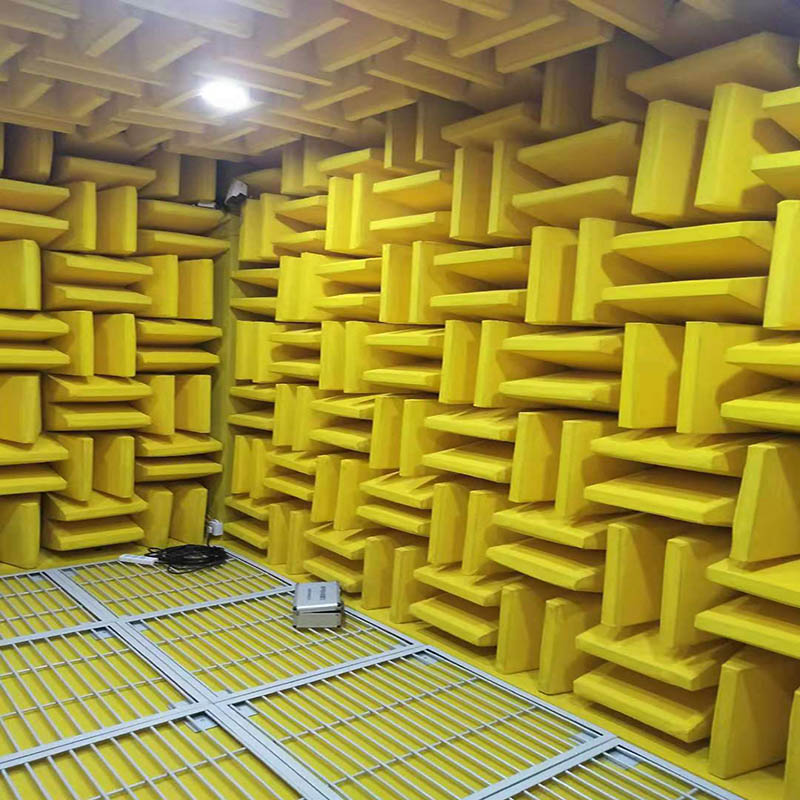Anechoic chambers are constructed using specific materials to achieve the desired acoustic properties. The main materials used in anechoic chambers typically include:
Absorptive Materials: These materials are used to minimize sound reflections within the chamber. They absorb sound energy rather than reflecting it back into the chamber. Commonly used absorptive materials include foam wedges, fiberglass, mineral wool, or porous materials with specific acoustic properties.
Structural Materials: These materials provide the structural integrity of the chamber and ensure that it is stable and secure. Common structural materials include concrete, steel, or other rigid materials that can support the weight of the chamber and any additional equipment.
RF (Radio Frequency) Absorbers: In some cases, anechoic chambers may also require RF absorbers to reduce electromagnetic reflections. RF absorbers are made up of specialized materials designed to absorb radio frequency energy. These materials are usually carbon-loaded foam or ferrite tiles that can effectively absorb and dissipate electromagnetic energy.
Shielding Materials: If the anechoic chamber needs to provide electromagnetic shielding, additional materials such as conductive metals or metal meshes may be used. These materials help contain and attenuate electromagnetic interference or external signals from entering or leaving the chamber.
When we design and build an anechoic chamber, we will first communicate with the customer to understand clearly the customer's needs, what is the purpose of the customer's anechoic chamber, and what standards the customer requires. We will combine the space of the anechoic chamber and the actual environment according to the customer's requirements. And so on, comprehensively choose the appropriate materials to build the anechoic chamber.

